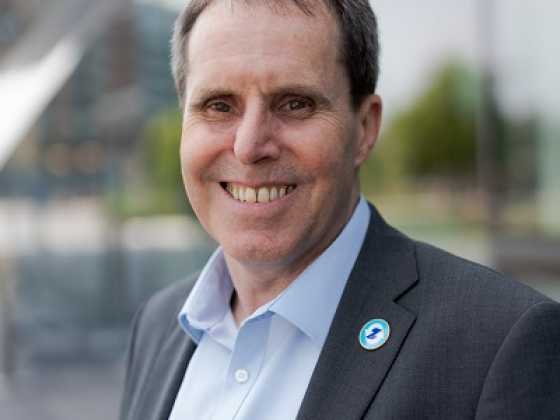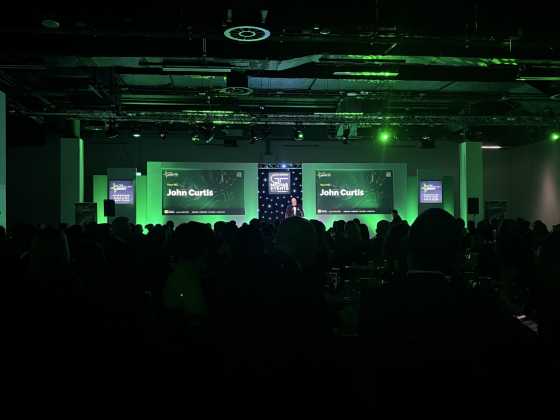The Commercial Vehicle Show 2025

The 25th anniversary of the Commercial Vehicle Show gathered over 13,000 visitors at the NEC Birmingham from 29 April to 1 May 2025 to explore the vehicles, technologies and policies needed to decarbonise road transport
With commercial vehicles responsible for 36 per cent of all road transport CO2 emissions and 12 per cent of the UK’s total, the challenge is immense. However, there are plenty of opportunities, as highlighted across the landmark speeches and seminars that covered the shift to zero-emission vehicles at the Commercial Vehicle Show, which ran from 29 April to 1 May 2025.
OEMs lead the charge
Product launches from Renault, Farizon, and ISUZU reflected the sector’s commitment to electrification. From purpose-built BEVs to electric refrigerated vans and smart fleet tools, innovation was front and centre. Ford UK revealed one in four of its vans will be electric by next year, while Renault reinforced its new partnership with Flexis, an upcoming all-electric CV platform.
Yet despite this momentum, uptake remains behind target. Just 6.3 per cent of new vans are currently electric, though this is forecast to rise to 9.6 per cent in 2025 and 15.2 per cent in 2026. With only 0.5 per cent of HGVs currently decarbonised, progress in the heavy sector is slower still.
Policy direction from SMMT and RHA
Opening the show, Mike Hawes, SMMT chief executive, praised industry progress but warned that fundamental barriers persist. “The pace of transition needs to accelerate. Grid connections are too slow. All depots must be connected. Four public HGV chargers nationwide is nowhere near enough. We need consistent planning policy, and action on energy costs, which are 60 per cent higher than the European average. Operators cannot make a compelling case for investment until those costs come down.”
Chris Ashley, RHA senior policy lead, also launched a roadmap focused on five priorities: cost, infrastructure, vehicle performance, skills and mindset. He said that the shift will require up to £100 billion of investment and a clear plan to ensure working vehicles stay operational while adopting zero-emission alternatives.
Public and private voices unite
At the EV Café Village, operators and local authorities shared real-world experience from the front lines of fleet decarbonisation. Speakers from National Grid, Drax Electric Vehicles, Scottish Water and Dawson Group called for infrastructure-first strategies, driver engagement, phased depot upgrades and clear stakeholder mapping.
Electrification isn’t just about vehicles, they argued, it requires cultural change, planning permissions, energy expertise and local collaboration. Spokespeople from local authorities including Islington, Oxford, Nottingham and Suffolk country echoed this sentiment, positioning fleet transition as a wider investment in public health and sustainability, not just compliance.
GF’s Decarbonisation Hub
GREENFLEET’s first-ever Decarbonisation Hub took place at the Commercial Vehicle Show and delivered a compelling mix of expert-led discussion and innovative product showcases in a dedicated space focused on cleaner commercial vehicles.
Hosted by sustainable transport expert Andy Eastlake, the Hub featured a dynamic speaker line-up with insightful commentary on the biggest challenges and opportunities in truck and van decarbonisation.
Attendees were also able to have informal discussions about the latest technology and services for the industry at the exhibitor pods, which covered a range of products, from refrigeration systems, EV charging, breakdown cover, driver training, natural gas, hydrogen, leasing solutions, and so on.
The HGV challenge
The HGV segment remains a significant hurdle. Despite more than 30 zero-emission HGV models now on the market, operators are hesitant due to infrastructure gaps, high up-front costs and total cost of ownership uncertainties. Just four public HGV chargers are live in the UK, and depot upgrades remain slow and expensive.
Amy Stokes, Volvo Trucks’ head of e-mobility, said battery electric trucks are more than capable and have been in use since 2019, but progress is hindered by slow infrastructure development. She noted that hubs like Immingham mark vital first steps, but more government and private support is needed to expand the model. Hydrogen was also acknowledged as a future option for long-haul or heavy-duty use, but the consensus remains that the majority of HGVs will be battery electric within the decade.
The road ahead The Commercial Vehicle Show 2025 brought together more than 250 exhibitors and over 70 expert-led seminars, sparking action, ideas and collaboration. It made clear that the path to net zero will not be an easy one, but it is happening.






